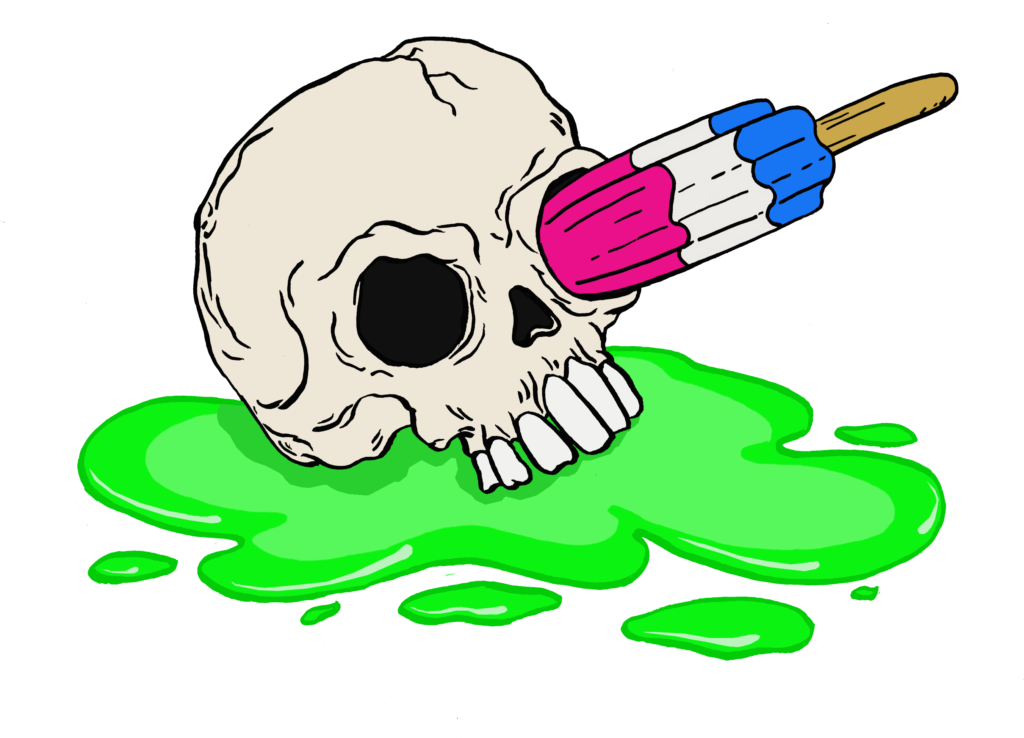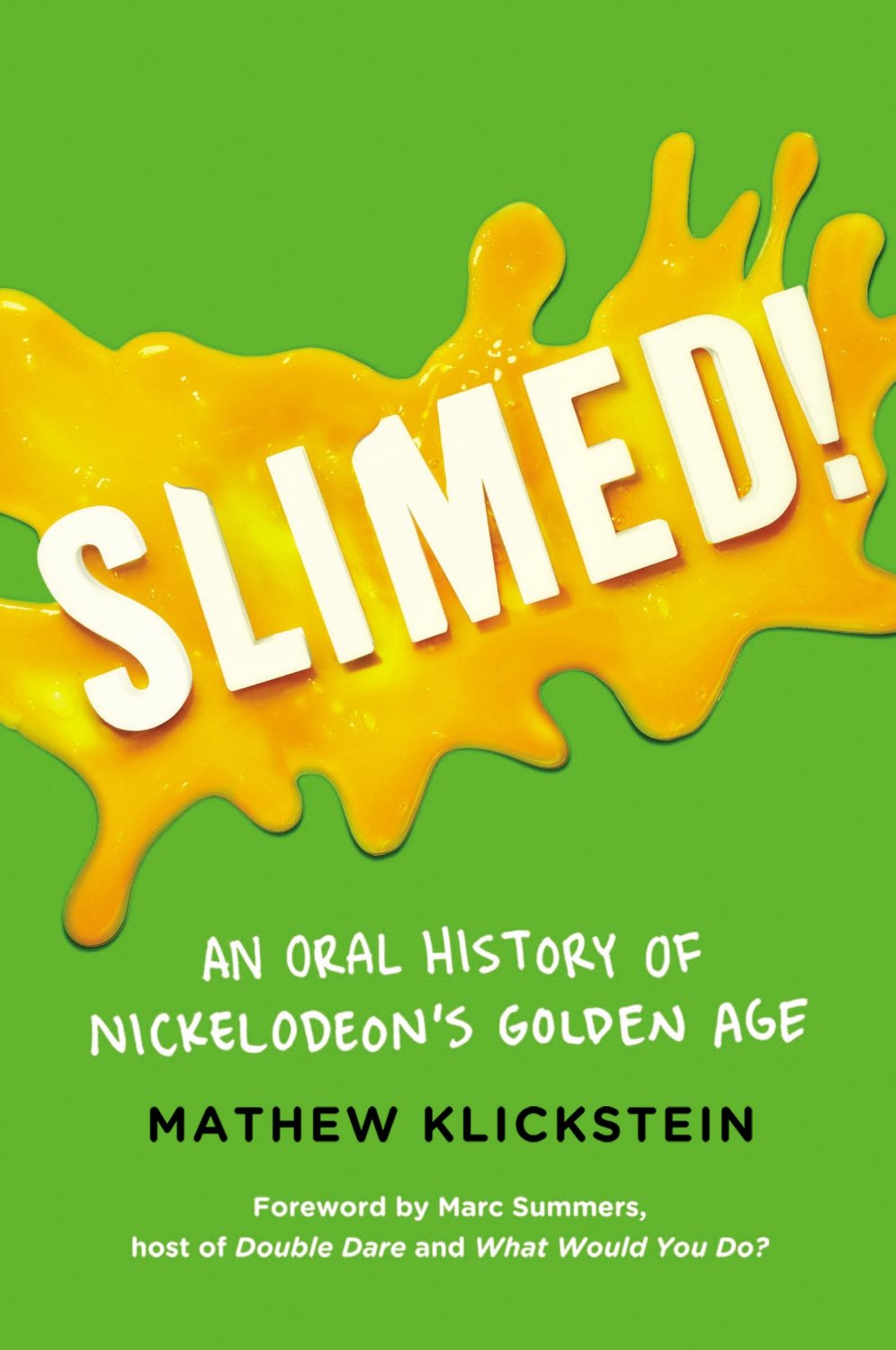Sometimes it’s really hard to find the balance between being a fan of something and being, well, fanatical. I’m not making a judgment call on one being better or worse, it’s more of a perspective thing; how often times I have a hard time knowing where the line is between wading out far enough into the pop culture sea to swim and where it begins to get so deep that I’m constantly worried about drowning in useless knowledge. I’ve been thinking about this idea a lot while reading the recently published book, Slimed!: An Oral History of Nickelodeon’s Golden Age by Mathew Klickstein. When I saw the book on Amazon I immediately put it on my wish list as I’m a huge fan of Nick, particularly the stuff that aired between ’81-’95 or so. I grew up on the fledgling channel’s syndicated content like Pinwheel, Mr. Wizard’s World, Out of Control, Danger Mouse, Count Duckula, Paddington Bear, and You Can’t Do That on Television, and loved the shift into original programming in the mid to late 80s through the 90s with stuff like Double Dare, Nick Arcade, Hey Dude, Welcome Freshman, Salute Your Shorts, The Adventures of Pete & Pete, and Clarissa Explains It All, not to mention their groundbreaking foray into animation with shows like Rugrats, Ren & Stimpy, Doug, and Rocko’s Modern Life. I was lucky to be one of the kids with access to cable in the early 80s and had a chance to watch the network blossom from a very independent-minded kids channel into the juggernaut of a brand that it is today.
I was super stoked when my parents sent me the book for Christmas and immediately tore into it looking for the story behind the network and shows I loved so much as a kid. But after only a few pages I noticed something that really started to bug me, specifically with the format the author chose to deliver the history of Nickelodeon, the “oral history”. For those unfamiliar, oral histories utilize firsthand accounts on a subject via interviews with those who were intimately involved. Whether it’s using vintage print or video interviews, or new ones with pointed questions to document a specific period of time or event, the idea is to capture the thoughts and feelings unfiltered by a single person’s perspective (outside of editing of course.) Though information gathered in this manner is still biased from interviewee to interviewee, a balance forms as more and more subjects are brought in to speak on a particular subject. Though the technique is far from new, there have been a bunch of books utilizing this format to tackle sprawling subjects like the birth and rise of punk rock (Legs McNeil & Gillian McCain’s Please Kill Me), the Post Punk music landscape (Michael Azerrad’s Our Band Could Be Your Life), or the history of Saturday Night Live (Tom Shale’s Live From New York.) These books range from brilliant (Please Kill Me) to brilliant train wrecks (Live From New York), with much of the praise or problems falling squarely on how well organized the information is presented. You see these books are largely if not completely a collection of attributed quotes; page after page of snippets strung together by theme or timeline (or both), with little to no summation by the author/editor. In the case of Please Kill Me, McNeil and McCain exhaustively separate the interview snippets in bite-size four-year chunks, sub-categorized by theme (or band.) Though there is an appendix listing every participating interviewee and how they fit into the story of punk, the way they’re presented you get to know these contributors and the need to flip to the end of the book to figure out who is speaking is rare. On the other end of the spectrum you have Live From New York, which flits from topic to topic with little to no connective tissues between interview blurbs.
Unfortunately Slimed! falls into the category of brilliant train wreck. How many of you recognize the laundry list of shows I mentioned in the opening paragraph? Okay, for all those that raised their hand, how many of you can name the actual actors, voice actors, animators, directors and producers on more than one of those shows? I’m betting a lot of those hands dropped. I hardly consider myself a Nick historian, but after a bunch of conversations with friends I’ve found that I’ve managed to remember way more stuff about the channel than I probably should know. But if my life depended on naming anyone in the cast of Clarissa Explains It All besides Melissa Joan Hart, well, let’s just say I’d be price-shopping for cheap cremations. This is the first place where this book falls down. Though there is a detailed alphabetically ordered list of interviewees at the back of the book, I found myself constantly flipping to the back to figure out who was talking. Though the author goes to pains to defend his formatting choices (specifically in response to any 1-3 star reviews on Amazon that mention the formatting issues) stating that he put a lot of thought into trying to make sure each person’s opening quote mentioned any pertinent shows they were involved in, I think he’s deluded himself into thinking that the readers are as versed in Nickelodeon as he’s become over conducting the numerous interviews and research to put the book together. Klickstein goes on to champion the “oral history” format by mentioning the thematic threads in the seven chapters of the book (target demographics, music & sound design, visual design, diversity in cast & crew, problems at the network, and the end of the pre-corporate era) and how they supposedly help to keep the reader engaged in the “story of Nickelodeon”, any tonal threads he attempts to weave are dashed by the reader consistently having to flip to the back to figure out who is talking, and about which show. The author/editor references McNeil and McCain’s Please Kill Me numerous times (in the acknowledgements and in responses to reviews on Amazon) as the gold standard and what he took inspiration from when formatting his Nick history. Unfortunately he seems to have missed the forest for the trees as he utilizes little to none of the clear organization of that book. PKM goes year by year, band by band, whereas Slimed! constantly jumps around throughout the 80s and 90s, and never stays on a show for more than a quote or two at a time. While he would like to think that the thematical separation addresses this, the first three chapters have a ton of overlap that makes the initial hundred pages annoying to try and follow.
The formatting issue is compounded by Klickstein’s reluctance to insert his presence into the book as the interviewer. With absolutely no summary or synopsis to lead the interviewee responses the reader is left with only the very general themed topics to try and figure out what the conversation is driving at during a good chunk of the book. There are things brought up that aren’t explained, like the failed Clarissa sequel series pilot called Clarissa Now or references to people who weren’t interviewed (and thus not given a bio in the book), which requires some time spent on Wikipedia to fill in the gaps that the book just does not even bother to try addressing. There are also frequent points in which the quotes reference the inferred questions Klickstein asked, which makes it awkward when you’re left guessing exactly what that question is. I find it hard to believe that the idea of ordering the quotes by year or grouping them show by show (or at least adding a series annotation by each quote instead of just the name of the person speaking) would have hurt the narrative flow of the book that Klickstein is trying to establish.
For all my nit picking about format, I want to stress that this book is a “brilliant” train wreck. Just because it’s super annoying to try and sift through, doesn’t mean that it’s not well worth the time as it’s chock full of interesting facts and observations from the folks that brought Nickelodeon to life. There’s some great background on You Can’t Do That On Television that wasn’t covered in David Dillehunt’s documentary (You Can’t Do That On Film), as well as some amazing behind the scenes stories about that first wave of Nicktoons (particularly Doug which is a show that seems to get lost between the insanity of Ren & Stimpy and the popularity of Rugrats.) I loved reading about the thought put into the Double Dare obstacle course, how ahead of its time Nick Arcade was, finding out about the awkward teenage romance and breakups behind the scenes of shows like Hey Dude, Clarissa Explains It All and Welcome Freshman. Did you know Michael “Donkey Lips” Bower actually broke that fishing reel in the credits sequence of Salute Your Shorts (and ending up ad-libbing the line about it falling apart?) The book is a treasure trove of fun trivia and helps to pull the curtain back on the shows and a network that helped to define our collective childhoods. It’s just unfortunate that getting through it all is a lot like reading stereo instructions.
Though I wish the formatting had kept the reader in mind, and it would have been nice to get more information oon the ’79-’85 Nick lineup of series (it barely mentions stuff like Pinwheel, Out of Control, Mr. Wizard’s World or the slew of other early shows, and completely omits Turkey Television, Belle and Sebastian, The Mysterious Cities of Gold and The Little Prince), I’d have to recommend the book on the trivia alone. If you’re a fan of the channel and don’t mind risking a case of carpel tunnel after flipping to the back of the book six billion times, check out Slimed!: An Oral History of Nickelodeon’s Golden Age…

